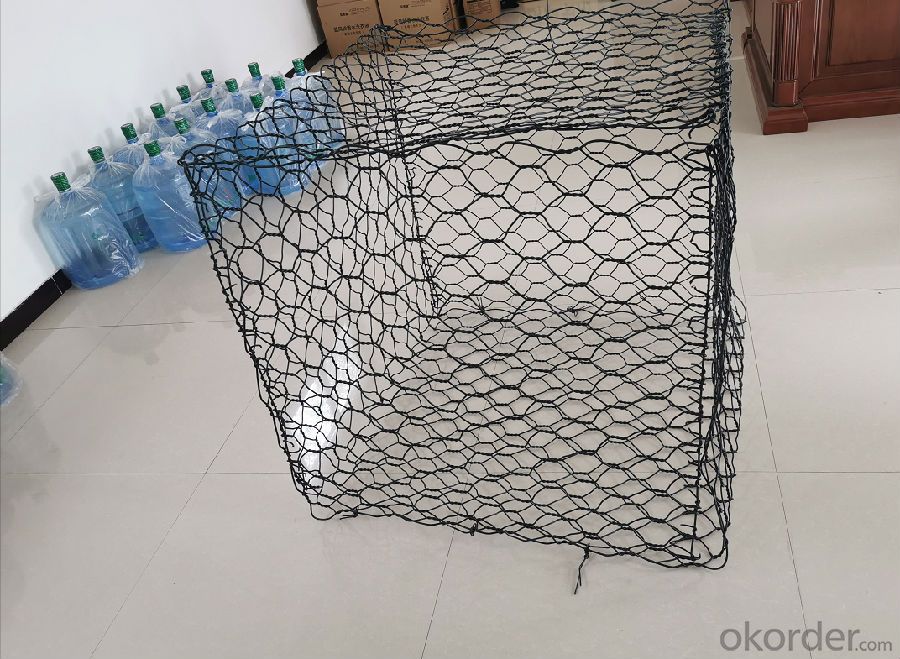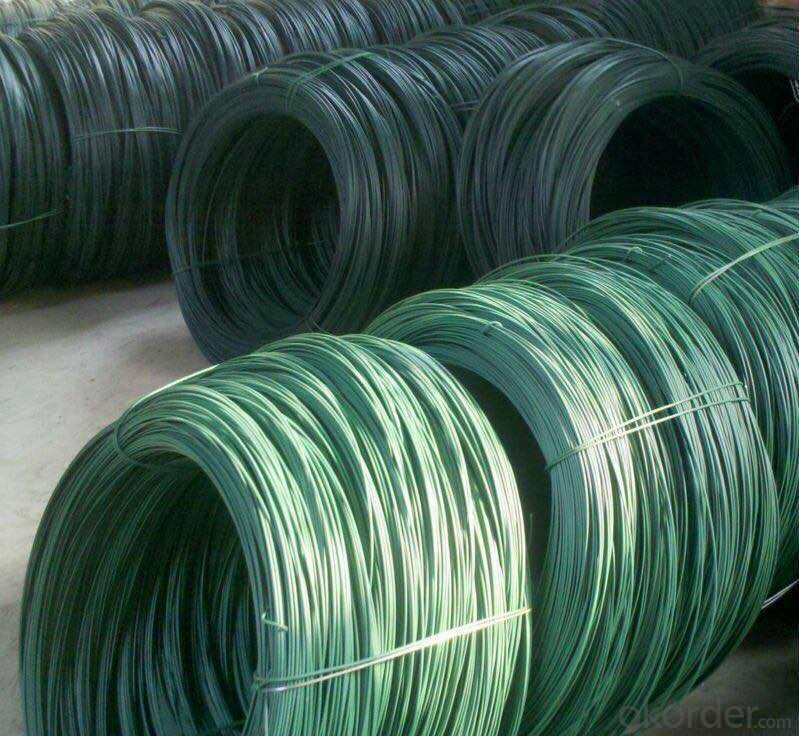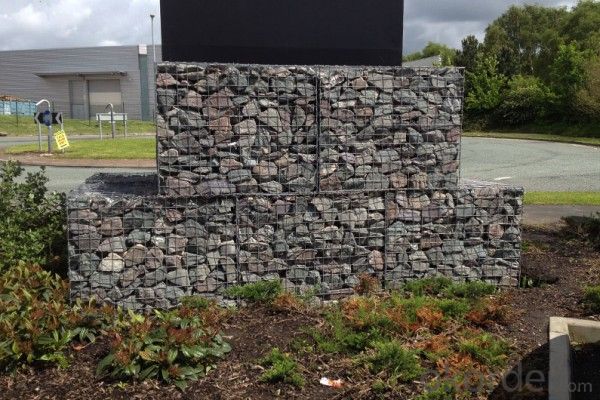PVC Coated Hexagonal Gabion Mesh Stone Cage
- Loading Port:
- Tianjin
- Payment Terms:
- TT or LC
- Min Order Qty:
- 500 set
- Supply Capability:
- 5000 set/month
OKorder Service Pledge
OKorder Financial Service
You Might Also Like
PVC Coated Hexagonal Gabion Mesh Stone Cage
1. Product introduction
Gabion Mattresses serves as a retaining wall, providing various prevention and protection works such as landslide prevention, erosion and scour protection as well as various type of hydraulic and coastal protection for river, sea and channel protection. This Gabion Mattress System is made up of a specially designed composite in order to maximize its performance through three phases of vegetative process from unvegetated to vegetation establishment up to vegetation maturation.
2. Specification

3. Advantages
4. Application 1) Gabion retaining wall.
1) Easy to install, just a stone into the gabions and seal it.
2) To facilitate transport, it can be folded up and transported it, installed on the site.
3) Withstand natural damage, very resistant to corrosion.
4) Be able to accept a wide range of deformation, but not collapse.
5) Good permeability, can avoid the harm by the hydrostatic formation.
2) Gabion Dipo protection.
3) Gabion bridge girder with a mesh.
4) Gabion road and mountain railway guard.
5) The large water conservancy projects.
6) Ecological appearance.
5. Pictures




6. FAQ
Q: Are you a manufacture or trading company?
A: We are factory, we have been in producing this product for more than 16 years.
Q: Why choose us?
A: We have professional production line and team, Our goal is to deliver excellence from start to finish of every project.
Q: Can you offer free sample?
A: Yes, as first cooperation usually the customer pay freight, and we will return back this found if you make an order.
Q: Can we have your products with our own logo on package?
A: Yes, just send us your logo or printing design and the setup cost would be quoted per artwork.
- Q: What are the benefits of using geomembranes for landfill caps?
- The benefits of using geomembranes for landfill caps include preventing the release of harmful substances into the environment, reducing the risk of groundwater contamination, minimizing odors and air pollution, enhancing the stability and longevity of the landfill, and allowing for efficient collection and treatment of leachate.
- Q: Can earthwork products be used for creating artificial waterfalls?
- Yes, earthwork products can be used for creating artificial waterfalls. Earthwork products such as rocks, boulders, and soil can be strategically placed to construct the structure and shape of the waterfall. Additionally, these products can help in creating a natural-looking and aesthetically pleasing waterfall feature.
- Q: Vehicle engineering civil engineering machinery engineering and automation materials which is better Ah are doing
- We recommend choosing automation
- Q: Can earthwork products be used for creating natural-looking landscapes?
- Yes, earthwork products can be used for creating natural-looking landscapes. Earthwork products such as soil, rocks, and mulch can be strategically placed and arranged to mimic natural landforms, textures, and colors, resulting in a landscape that closely resembles a naturally occurring environment. Additionally, these products can be used to contour the land, build retaining walls, create water features, and establish planting beds, further enhancing the natural aesthetic of the landscape.
- Q: Can geomembranes be used for pond liners?
- Yes, geomembranes can be used as pond liners. Geomembranes are impermeable synthetic materials that are designed to prevent water seepage. They are commonly used in various applications, including as liners for ponds and other water containment systems.
- Q: Are there any specific earthwork products available for wetland restoration?
- Yes, there are specific earthwork products available for wetland restoration. These products include materials such as organic compost, wetland soil mix, coir logs, and geotextiles that help stabilize the soil, promote vegetation growth, and enhance wetland habitats.
- Q: Can earthwork products be used in stormwater filtration systems?
- Yes, earthwork products can be used in stormwater filtration systems. Earthwork products such as geotextiles, geogrids, and permeable pavers can help to filter and remove pollutants from stormwater runoff, improving water quality and reducing the impact on natural ecosystems. These products are designed to facilitate the filtration process by allowing water to pass through while trapping sediments, debris, and contaminants.
- Q: What are the advantages of using geosynthetic materials in airport runway construction?
- There are several advantages of using geosynthetic materials in airport runway construction. Firstly, geosynthetics provide increased strength and stability to the runway, enhancing its overall performance and durability. These materials also offer excellent resistance to environmental factors such as erosion, frost, and water penetration, ensuring the longevity of the runway. Additionally, geosynthetics are lightweight and easy to install, saving time and labor costs during construction. Moreover, their use can lead to reduced maintenance requirements and increased safety for aircraft operations. Overall, geosynthetic materials contribute to the efficient and long-lasting construction of airport runways.
- Q: What is the purpose of using geotextile bags in erosion control structures?
- The purpose of using geotextile bags in erosion control structures is to provide a barrier against soil erosion while allowing water to pass through. These bags are filled with soil or other materials and strategically placed to create a stable structure that can withstand the force of water, preventing further erosion and protecting the land.
- Q: How do geogrids aid in reinforcement of tunnel walls in earthwork applications?
- Geogrids aid in the reinforcement of tunnel walls in earthwork applications by providing additional strength and stability to the surrounding soil. These synthetic materials are installed within the earthwork layers to distribute the loads and tension forces more evenly, preventing soil movement and potential collapse. This reinforcement technique enhances the overall structural integrity of the tunnel walls, ensuring a safer and more durable construction.
Send your message to us
PVC Coated Hexagonal Gabion Mesh Stone Cage
- Loading Port:
- Tianjin
- Payment Terms:
- TT or LC
- Min Order Qty:
- 500 set
- Supply Capability:
- 5000 set/month
OKorder Service Pledge
OKorder Financial Service
Similar products
Hot products
Hot Searches
Related keywords






























